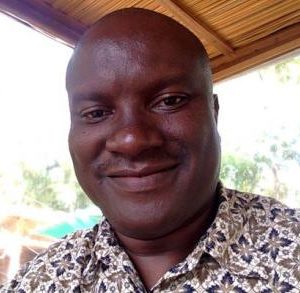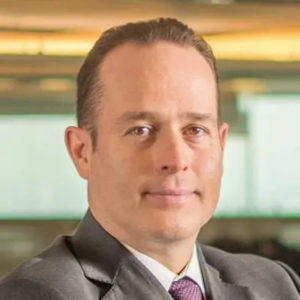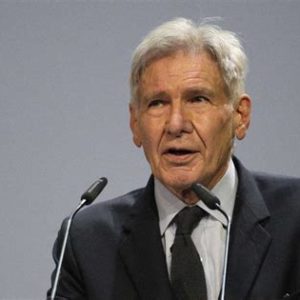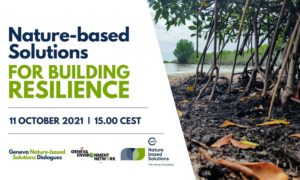Événement Virtuel
Nature-based Solutions for Building Resilience | Geneva Nature-based Solutions Dialogues
The Geneva Nature-based Solutions dialogues aim to facilitate further engagement and discussion among the stakeholders in International Geneva and beyond, in the lead-up to a critical year for nature and society. The dialogues are convened by the Geneva Environment Network and the International Union for Conservation of Nature (IUCN).
About the Dialogues
We are facing a triple planetary crisis – climate change, nature loss and pollution. In this context, Nature-based Solutions (NbS) are a powerful ally to address a societal and environmental challenges. As per IUCN definition, NbS are actions to protect, sustainably manage and restore natural or modified ecosystems that address societal challenges effectively and adaptively, simultaneously providing human well-being and biodiversity benefits.
NbS are a powerful tool to facilitate and catalyse the engagement of cross-sectoral stakeholders to join forces towards the implementation of an ambitious Post-2020 Global Biodiversity Framework (GBF) and move towards achieving the CBD 2050 Vision of ‘Living in harmony with nature’. NbS also offer a pathway for synergies among several multilateral environmental agreements, including for biological diversity (CBD), climate change (UNFCCC), disaster risk reduction (Sendai Framework), desertification (UNCCD) and the wider Sustainable Development Goals (SDGs) – and for mainstreaming nature conservation into sectoral decision-making processes.
In the lead-up to a critical year for nature and society, NbS offer an opportunity to address a wide range of urgent societal challenges. The year 2021 and the major upcoming negotiations should indeed mark a turning point towards a resilient world for future generations.
Join the Geneva Environment Network and the International Union for Conservation of Nature in a one-year journey, where experts from all over the world and different sectors will discuss throughout the year how NbS are relevant to various debates ongoing in Geneva.
Sessions
- Nature-based Solutions and Health | 26 April
- Nature-based Solutions and Ecosystems Restoration | 7 June
- Nature-based Solutions and the Post-2020 Biodiversity Framework | 28 June
- Decent Work Through Nature-based Solution for an Inclusive Socio-Economic Recovery | 30 August
- Nature-based Solutions and Food | 13 September
- Nature-based Solutions and the Ocean | 27 September
- Nature-based Solutions and Cities | 25 October
- Nature-based Solutions and Peacebuilding | 1 November
- Nature-based Solutions and Water | 22 November
- Nature-based Solutions and People | 6 December
About this Session
Every year, man-made and natural hazards impact the lives of millions of people around the globe. Disasters – when hazards meet people’s vulnerability – cause loss of lives and livelihoods, displacement, and social and economic upheaval, undermining efforts to achieve the Sustainable Development Goals (SDGs). As climate change and ecosystem degradation exacerbate disasters, understanding, managing, and reducing disaster risks provide a foundation for building resilience.
Healthy ecosystems can act as a buffer against hazards and the impacts of climate change, while building resilience, sustaining livelihoods and supporting coping as well as recovery actions from disasters. Vegetation cover can stabilise slopes, thus reducing the risk of landslides. Wetlands can help regulate floods. Coastal vegetation, sand dunes and mangroves can provide protection from storm surges, strong winds and cyclones. Healthy coral reefs can reduce wave energy during coastal storms. Therefore, the protection, sustainable management, and restoration of these ecosystems strengthen disaster and climate risk management.
Here lies the immense potential of Nature-based Solutions to build resilience for communities across the globe. Nature-based solutions are increasingly being recognized as an effective and cost-efficient way of reducing disaster risks, helping people adapt to climate change and building community resilience. They can address all three parts of the risk equation by:
- Preventing or mitigating hazards themselves
- Limiting people’s exposure to hazards
- Limiting people’s vulnerability
On 13 October, the world celebrates the International Day for Disaster Risk Reduction. It is an opportunity to acknowledge the progress being made toward reducing disaster risk and losses in lives, livelihoods and health in line with the Sendai Framework for Disaster Risk Reduction 2015-2030 and with the programme of the 2022 Global Platform for Disaster Risk Reduction .
This session showcased how NbS contribute to global efforts to build resilience and implement the Sendai Framework recognizing environmental management as a key component when designing well informed nature-based actions for disaster risk reduction, but also for climate change adaptation.
Speakers
By order of intervention

Ali RAZA RIZVI
Global Coordinator Adaptation & Disaster Risk Reduction, IUCN | Moderator

Kanyinke SENA
Director, Indigenous Peoples of Africa Coordinating Committee & Co-chair of IUCN CEESP Indigenous Peoples, Customary & Environmental Laws, and Human Rights

Tiziana BONZON
Manager, Climate, Migration & Resilience, International Federation of Red Cross and Red Crescent Societies (IFRC)

Mariko WATANABE
Attaché, Permanent Mission of Japan to the UN in Geneva

Rubem HOFLIGER
Public Sector Solutions Head Latin America, Swiss Re
Nature Champion

Harrison Ford
Actor | Video message from the IUCN World Congress 2021
Summary
Welcome
Opening Remarks and Setting the Stage
Ali RAZA RIZVI | Global Coordinator Adaptation & Disaster Risk Reduction, IUCN | Moderator
- Disaster and climate change impacts cannot be seen in isolation – they relate to everything happening around us. In addition, disaster-risk reduction and climate adaptation cannot be addressed in a vacuum; they need to be integrated into an overall development and conservation paradigms.
- The ability of people to cope with disasters and adapt to climate change is inextricably linked to their access to basic human rights and to the health of the ecosystems they depend on for their livelihoods and well-being.
- Nature-based solutions address livelihoods, socio-economic and ecological well-being. IUCN has been involved in a number of countries working on projects to reduce risk and enhance resilience: more than 100 projects in 94 countries and USD 230 million funding in the past 10 years
- IUCN also tries to inform and influence policies while also working at the practical level. It’s also critical to bring technology, climate science, indigenous knowledge, nature-based solutions and socio-economic livelihoods together to combat increasing disasters and climate change.
- In terms of disasters, we need to look at the preparedness, prevention, response and recovery levels; partnerships and breaking silos are critical for implementation.
Current Developments and Opportunities on Integrating NbS into Coastal Marine Management
Kanyinke SENA | Director of the Indigenous Peoples of Africa Coordinating Committee AND Co-chair of IUCN Commission on Environmental, Economic and Social Policy Specialist Group on Indigenous Peoples, Customary & Environmental Laws, and Human Rights (CEESP – SPICEH)
- Indigenous peoples have been a key part of the discussion on nature-based solutions and the World Indigenous Peoples Summit offered a six-point agenda for indigenous people to contribute to nature-based solutions:
- promote and implement rights-based approaches and safeguards to ensure recognition, respect and enforcement of indigenous rights
- enhance the recognition and support for indigenous governance systems for the use, management and conservation of natural resources
- strengthen measures to guard against threats to indigenous environments and environmental defenders
- promote and implement indigenous solutions to conservation based on traditional knowledge
- increase and strengthen indigenous leadership in decision-making processes and access to resources
- influence post-COVID-19 recovery and food security agendas to improve indigenous livelihoods
- Partnership is key as we can’t do it alone; we have to work together.
Tiziana BONZON | Manager, Climate, Migration & Resilience, The International Federation of Red Cross and Red Crescent Societies (IFRC)
- The humanitarian sector has been increasingly moving from approaches that are only focused on responding to disasters and crises towards the integration of disaster risk reduction and to address in a more integrated way the humanitarian consequences of the climate and environmental crises.
- With more extreme and intense disasters, more communities are affected and we recognize that we have a role to play to reduce our impact on the environment but also to better understand how we can work with nature to increase the resilience of the most vulnerable.
- We’ve been co-leading with the International Committee of the Red Cross a process to develop a climate and environment charter for humanitarian organizations, which was launched in May 2021 and already endorsed by over 150 signatories.
- As we need to do more to support climate change adaptation, nature-based solutions are a unique approach to resilience because it integrates environmental and climate change agendas into our humanitarian work.
- Nature-based solutions are relevant throughout the disaster management cycle: Reducing risks linked to hazards, helping communities to adapt to a changing climate and providing health and livelihood benefits, including food and water security.
- The IFRC has integrated specific nature-based solutions targets in its recent planning budget. In Vietnam, we’ve supporting the Vietnamese Red Cross to restore mangroves in coastal communities to provide protection against typhoons and storms. In Jamaica, we are assessing, planning and, hopefully, implementing reach-to-reef approaches to support communities and increase their livelihoods resilience. In Honduras, we’re using bioengineering solutions like vegetation terraces to protect communities from landslides.
- We recognize the benefits of nature-based solutions but there are also challenges and barriers that we need to consider – as humanitarian actors, we need to change the way we work. We respond to disasters within short notice but nature-based solutions require long-term approaches. They require the adequate resources and funding that are not necessarily from humanitarian aid. In addition, humanitarian work is usually focused on specific sites of the disasters while nature-based solutions need system-wide approaches.
- It’s important to partner with others, bring in the expertise from specific actors working in the environmental and climate sectors, join efforts and break silos. We need to work to build the case for nature-based solutions because as they require a change in mindset.
Mariko WATANABE | Attaché, Permanent Mission of Japan to the United Nations Office and other international organizations in Geneva
- Japan is one of the most disaster-prone areas – earthquakes, tsunami, volcanic eruptions, typhoons and heavy rain. We have always had to live with disasters caused by natural hazards and the Japanese people believe that nature is a force beyond our control. Hence, living in harmony with nature is part of our traditional culture.
- Nature-based solutions or Eco-DRR are not new concepts for the Japanese people, in terms of awareness. As for national policies, the Fukushima earthquake in 2011 has completely changed our way of living and approach to disasters. We started to think of more sustainable ways and instead of developing artificial infrastructure, it has become more important to reflect on ecological and sustainable solutions to disaster management such as:
- using natural sites that may protect the population from future disaster risks – wetlands for tidal waves
- sharing and diffusing information and knowledge on ecosystem functions
- It is important to protect nature because it may prevent and protect us from disasters. At the local level, inhabitants have been trying to develop tools to prevent future disasters while taking into consideration the local natural circumstances. In addition, the Ministry of Environment has also prepared a handbook on ecosystem-based approaches.
Rubem HOFLIGER | Public Sector Solutions Head Latin America, Swiss Re
- I’ll share a real case study of a successful public-private partnership project on the Mesoamerican reef, the second biggest reef in the world and the biggest in the Western Hemisphere. The reef protects the Cancun area and Riviera Maya in the state of Quintana Roo.
- There is a multi-billion-dollar tourism industry in the Cancun area and Riviera Maya. But it is also extremely exposed to hurricanes. The local community realized a few years ago how important it is to preserve and protect natural asses. For example, in specific areas where the coral reef was healthy, the reef acted as a natural barrier from hurricanes and protected coastal economic activities.
- Nature Conservancy reached out to Swiss Re to establish a partnership with the state of Quintana Roo and the federal government of Mexico to find a unique insurance solution that could help to protect the coral reef when a major event, such as a storm, surges.
- The response was to work on a parametric insurance solution if we go to the next slide – when the coral reef is impacted by a hurricane, there is an immediate need for cash liquidity to immediately restore the reef. This way, the local community can immediately act to collect the broken pieces of the coral, take them to a nursery and replant it. Without swift action, the reef will simply die and it will take years and years for the corals to grow again. If the reef is not preserved, it won’t act as a natural barrier and won’t protect the coastal economic activities such as hotels, restaurants and water activities in the region.
- The main objective was to have something that could act immediately with a permanent funding source. It was decided to create a trust fund that would act with three main purposes: 1) Permanent conservation strategy and avoid over exploitation of the natural areas, 2) have resources to care for more frequent and less severe events (hurricanes that don’t have major impacts), and 3) buy insurance for more severe and less frequent events.
- In 2020, hurricane Delta proved that the insurance scheme worked. The payout was provided immediately after the event and the local community acted as brigades with guidelines on how to immediately respond. They were able to stabilize 1,200 colonies that were uprooted and planted over 6,000 broken coral fragments, which are now growing.
Championing NbS
Harrison FORD| Actor
- We all know that the last few years have not been easy. It’s hard. It’s hard to devote yourself to a cause that is so urgent and not be able to get the traction needed to make the change that is absolutely necessary. It’s hard to read the headlines – floods, fires, famines, plagues and tell your children that everything is all right. It’s not all right. Damn it, it’s not all right. We’ve got to make things happen. We’ve got to make it happen now. Come on everybody, let’s get to work!
Open Discussion
How can youth be engaged and what is the role of youth?
Tiziana: If I think of the amazing network of volunteers that we have around the world, a lot of them are rather young. It’s not just the passion and motivation but is also an experience. The youth can be an amazing asset in raising awareness of what’s going on. With the right approaches and principles, the youth can be a credible voice.
How can we look into monitoring nature-based solutions in real life as they are long-term?
Tiziana: We have to find a way to demonstrate that it’s worthwhile and unless you have indeed a way to monitor and report on all the achievements that you’re trying to reach with whatever solution you want to implement, the negotiations will probably not go in favor of NbS but more in quicker solutions with visible impact. NbS may take longer but it’s worth investing as it’s more cost-efficient with real co-ownership of the solutions.
Mariko: In Japan, some communities are well developed or well prepared against natural disasters. When we think about the right direction to do against disaster risks, it depends on the natural circumstances. It’s important to know what kind of environment we’re living in so proper investments and indicators for monitoring and developed.
Rubem: Prevention and risk reduction are extremely important measures. We have seen cases in which policymakers have realized that constructing walls, gray areas, is not enough because at some point the wall will be destroyed and then an entire community, city, region will be flooded. We’ve seen after major significant floods how they are shifting the efforts from building these high walls to focusing more on mangroves, reforestation, and how water can be captured by the soil. When you get to the point of residual risk, it’s better to go and get a risk-transfer solution and in finding the right approach on how much to invest on risk reduction and preventive measures.
There are investments to safeguard those that provide productivity such as coral reefs. What about the livelihoods of vulnerable populations and in supporting their income? Would insurance also be available to the poor and what types of assessments and valuations to exposure can be done?
Rubem: It’s very important to remember the objective and the purpose of insurance. It provides protection against certain unforeseen and unexpected events. It’s important to understand the types of insurance that can provide protection to livelihood. We can try to assess and make some sort of an innovative risk transfer solution. For example, we are working in Peru with the fisheries sector. Climate change is making the oceans warmer so when there’s El Niño or La Niña, the anchovies will go farther into the ocean and the local fishermen are unable to fish as their boats are not prepared to go that far out into the ocean. We have put together an insurance coverage in which when the ocean has one of the parametric sets or triggers, the local fishermen get an indemnity payout.
Take-away Messages
Tiziana: There’s definitely a need to continue to learn more about nature-based solutions and I can certainly say this for the humanitarian organization I’m part of. We can certainly embrace what comes also from science from technology and improve the approaches that our communities are implementing. Let’s continue to learn together, to cross-share and be part of this process.
Mariko: We have to continue learning and collecting information. Sometimes this comes from technology-based knowledge and information but it’s also important to listen to the knowledge of our grandparents and the local people as they may know much better than the local governments on how to protect us from natural hazards.
Rubem: The key takeaway is to shift from theory to practice. We need to put things in motion. Much has been said and done on the research side but we are lacking execution. We need all stakeholders to get together to start executing what is already on paper.
Closing Remarks
Ali: We need to put theory into practice, bring in indigenous knowledge and have science-based data driving decision making. We need to work interdisciplinary, use sectoral approaches and scale up national policies and their implementation. We also need to bring in the private sector to help develop solutions. It’s a challenge but there are success stories. Moving forward together at the policy, theoretical and practical levels are critical.
Video
In addition to the live WebEx and Facebook transmissions, the video is available on this webpage.
Documents
Links
The update on Nature-based Solutions provides relevant information and the most recent resources, news and articles from the various organizations in international Geneva and other institutions around the world.
- International Day for Disaster Risk Reduction | UN
- What are Nature-based Solutions (NbS)? | Infographic | IUCN
- Eco-DRR: What are IUCN’s solutions? | IUCN
- Partnership for Environment and Disaster Risk Reduction | PEDRR
- Nature-based Solutions for Disaster and Climate Resilience | UN SDG Learn
- Words into Action: Nature-based solutions for disaster risk reduction | UNDDR | 2021
- IUCN Global Standard for Nature-based Solutions: First Edition | IUCN | 2020
- Ecosystem-Based Disaster Risk Reduction: Implementing Nature-based Solutions for Resilience | UNDDR | 2020
- Nature-based Solutions vital for risk governance | Statement by the Secretary-General’s Special Representative for Disaster Risk Reduction, Mami Mizutori, at the launch of IUCN’s Global Standard for Nature-based Solutions | UNDDR | 23 June 2020
- Nature-based solutions | Swiss Re
- Protecting and Enabling Nature-Based Solutions | Swiss Re | 2020
- How insurance is protecting the world’s second biggest coral reef | Veronica Scotti, Swiss Re | 16 September 2021
- Designing a new type of insurance to protect the coral reefs (Video) | Swiss Re | 23 September 2021
- Nature-based solutions to disasters (Issue Brief) | IUCN | November 2017
- Nature Based Solutions for Human Resilience: A Mapping Analysis of IUCN’s Ecosystem Based Adaptation Projects | IUCN | March 2014
- Building resilience to climate change : ecosystem-based adaptation and lessons from the field | IUCN | 2010
- Nature-based solutions for flood risk reduction: A probabilistic modeling framework | David Lallemant et al. | One Earth | 8 September 2021

